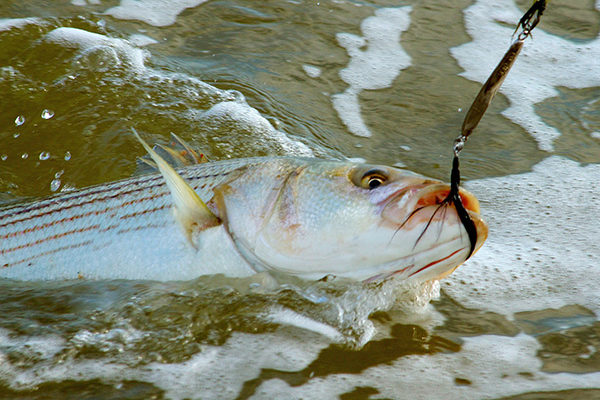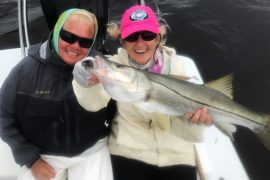
I’ve found, particularly in New Jersey, that metals get a bad rap. Though they are the preferred lures for false albacore, I rarely see surfcasters interested in stripers putting them in their plug bags. Instead, they usually go for bucktails, a few SP Minnows, and a black Bomber, along with all kinds of wood plugs and their molded epoxy brethren. Unless the anglers are targeting bluefish, metals don’t make it into many plug bags, and certainly not into night bags. But why not?
Metal lures have a lot of positive attributes. They cast well regardless of the wind speed and direction. They come in a wide range of shapes, sizes, and weights. They are simple, effective, inexpensive, and widely available, unlike many designer plugs. Furthermore, no matter how hard I smack a bridge or a rock with a spoon, it’s coming back in one piece.

I started asking, “Why not metals?” after an outing last year. It was well after dark, maybe 2 o’clock in the morning, and the area was loaded with bait. We were watching big fish blow up in the middle of a channel below a bridge, but there was a strong wind blowing right to left across the casting zone in such a way that the wind was blowing us off the fish. These fish were eating peanut bunker, which were only about 4 inches long, and lures with matching profiles couldn’t make it out there. The lures that could cast that far were too heavy to stay in the strike zone. My buddies and I cast like madmen and tried everything in our bags, and we all came up empty-handed. It was a truly frustrating situation, one that I think every bass fisherman has been in. The fish were there, and we couldn’t reach them.
It started me thinking, though. What lure cuts through wind, casts a mile, and can stay up in the water column while not rolling in heavy current? It was a short list, and I settled on a 2-ounce Krocodile spoon I had rusting in the bottom of my plug bucket. After the bite ended, I threw it a few times and, at 2 ounces, it got to where I needed it to be. The only remaining issue was visibility. Even though there was plenty of light in the water because of the bridge, it wasn’t remotely enough for me to have confidence that a fish could spot the steel’s silhouette. My solution? I sanded it down and painted it white.

I showed up the next night and started working around the bridge. I’d replaced the treble hook on the back of the spoon with a single hook that had some bucktail on it, and in the water, it looked like a jointed plug. However, the bite wasn’t anything like it had been the night before. Some small bluefish had moved in and were ripping up everyone’s plastics. I didn’t think I’d catch anything on the metal, but I wanted to see how it worked. Three or four casts in, much to my surprise, I pulled a short bass out of the channel. A few casts later, I had another one. This kept on until the tide flipped, and by the end of that short window, I’d caught six or seven shorts, one good fish, and a blue. The next day, I made four more variations on the same design, using other metal lures that had similar profiles.
I discovered over the next several weeks that a painted metal was a sleeper in certain situations and still an excellent choice in others. I fished with white metal out front at night, around Asbury Park and Sandy Hook, and caught fish. I fished at Shark River, working the inlet, and…





